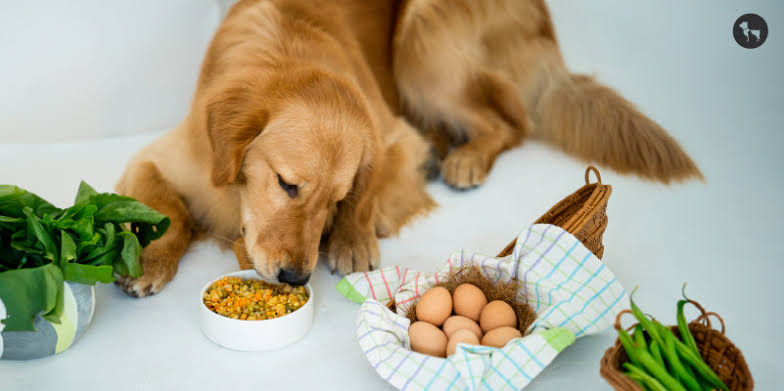
How to Make Nutrient-Rich Pet Food at Home on a Budget
Making homemade pet food can be a rewarding experience, ensuring your furry friend gets the best nutrition. This guide will walk you through the process, focusing on cost-effectiveness and nutrient-rich ingredients.
🐶 Pet Star
15 min read · 31, Jan 2025

1. Understanding Your Pet's Nutritional Needs:
Before we start cooking, it's crucial to understand your pet's specific needs. Different breeds, ages, and activity levels have varying nutritional requirements.
- Consult with your veterinarian: They can guide you on the appropriate protein, fat, carbohydrate, and vitamin/mineral levels for your pet.
- Consider your pet's age: Young, growing pets need more protein and calcium, while senior pets may require lower protein and higher fiber.
- Assess your pet's activity level: Active pets need more calories and protein to support their energy needs.
2. Choosing the Right Ingredients:
The key to a healthy homemade diet lies in selecting high-quality, affordable ingredients.
- Protein Sources:Lean meats: Chicken, turkey, beef, fish (salmon, tuna, cod) – choose lean cuts and remove excess fat.
- Eggs: Excellent source of protein and essential nutrients.
- Greek yogurt: Provides protein and probiotics for gut health.
- Lentils: A good plant-based protein source, especially for vegetarian or vegan diets.
- Carbohydrate Sources:Brown rice: A whole grain rich in fiber and nutrients.
- Sweet potatoes: Excellent source of vitamins and minerals.
- Oatmeal: Provides fiber and essential fatty acids.
- Quinoa: A complete protein source with high fiber content.
- Healthy Fats:Olive oil: Adds healthy fats and antioxidants.
- Coconut oil: Supports skin and coat health.
- Flaxseed: Rich in omega-3 fatty acids.
- Fruits & Vegetables:Carrots: Good source of vitamins and fiber.
- Spinach: Rich in vitamins and minerals.
- Apples (without seeds): Provide vitamins and antioxidants.
- Broccoli: Contains vitamins, minerals, and fiber.
3. Essential Supplements:
While you'll incorporate many nutrients through whole foods, some supplementation may be necessary.
- Calcium and Phosphorus: Crucial for bone health, especially for growing pets.
- Vitamin D: Essential for calcium absorption.
- Omega-3 Fatty Acids: Supports skin, coat, and brain health.
- Glucosamine and Chondroitin: Beneficial for joint health in older pets.
4. Budget-Friendly Tips:
- Buy in bulk: Purchase large quantities of protein sources and grains when they are on sale.
- Utilize leftovers: Incorporate cooked vegetables and grains from your own meals into your pet's food.
- Grow your own ingredients: If you have space, consider growing some of your own vegetables.
- Look for sales and discounts: Check local grocery stores and online retailers for deals on pet food ingredients.
- Avoid processed foods: Processed pet foods are often expensive and may contain unnecessary fillers.
5. Basic Homemade Pet Food Recipes:
Here are a few simple recipes to get you started:
- Chicken and Rice:Combine cooked chicken, brown rice, carrots, and peas.
- Add a drizzle of olive oil and a sprinkle of calcium powder.
- Beef and Sweet Potato:Mix cooked ground beef, sweet potatoes, spinach, and a small amount of bone broth.
- Include a source of omega-3 fatty acids, such as flaxseed.
- Fish and Brown Rice:Combine cooked fish (salmon, tuna, cod), brown rice, and green beans.
- Add a small amount of coconut oil for extra flavor and skin benefits.
6. Preparing and Storing Homemade Food:
- Properly cook ingredients: Ensure all meats are cooked thoroughly to prevent bacterial contamination.
- Cool the food completely: Allow the food to cool completely before storing.
- Store in airtight containers: Refrigerate cooked food for up to 3-4 days.
- Consider freezing: Freeze larger batches in individual portions for longer storage.
7. Transitioning Your Pet to Homemade Food:
- Start slowly: Gradually introduce homemade food by mixing it with your pet's current food.
- Monitor your pet closely: Watch for any signs of digestive upset, such as diarrhea or vomiting.
- Adjust as needed: Adjust the recipe based on your pet's preferences and any observed sensitivities.
Q&A Section
Ques 1: Can I feed my pet only homemade food?
Ans: While a homemade diet can be beneficial, it's crucial to consult with your veterinarian to ensure it meets all your pet's nutritional needs. They can help you determine if a completely homemade diet is suitable or if supplementation is necessary.
Ques 2: Are there any specific concerns for certain breeds?
Ans: Absolutely! Some breeds have specific dietary needs. For example, small breed dogs may require higher calorie intake due to their higher metabolic rate. Large breed dogs, on the other hand, are prone to joint issues, so a diet lower in calcium and higher in glucosamine and chondroitin may be beneficial.
Ques 3: What if my pet doesn't like the homemade food?
Ans: Don't worry! You can experiment with different flavors and textures to find something your pet enjoys. Try adding small amounts of cooked liver or bone broth for extra flavor. You can also try different cooking methods, such as steaming or stir-frying.
Ques 4: Can I give my cat homemade food?
And: Yes, you can make homemade food for your cat. However, cats have specific nutritional requirements, including a high protein intake and taurine, an essential amino acid. Consult with your veterinarian for guidance on creating a balanced and nutritious diet for your feline friend.
Ques 5: How often should I change my pet's homemade food recipe?
An: It's generally recommended to vary your pet's diet to prevent boredom and ensure they receive a wide range of nutrients. You can try different protein sources, carbohydrate sources, and vegetables to keep things interesting. However, avoid making drastic changes too frequently, as it can upset your pet's digestive system.
Ques 6: Is homemade food always cheaper than commercial pet food?
Ans: The cost of homemade food can vary depending on the ingredients you choose. However, if you utilize budget-friendly strategies like buying in bulk and using leftovers, you can often save money compared to purchasing high-quality commercial pet food.
Similar Articles
Find more relatable content in similar Articles

Composting Pet Waste: A Greener Way to Clean Up...
As pet ownership continues to .. Read More

Pets and Mental Health: The Science Behind Emotional H..
Discover the profound impact o.. Read More

Social Media for Pets: Turning Your Pet into a Digital..
From playful puppies to charis.. Read More

Virtual Vet Visits: Are Online Consultations Reliable?..
As pet healthcare embraces dig.. Read More
Explore Other Categories
© 2024 Copyrights by rPets. All Rights Reserved.